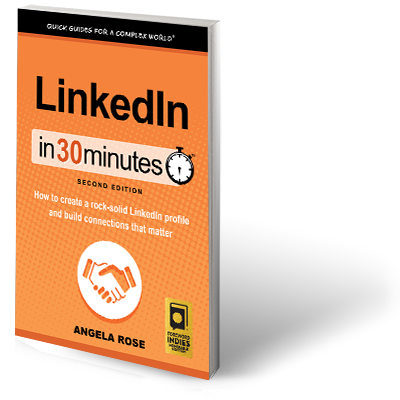I’m going to let you in on a little secret: I haven’t always been on LinkedIn. In fact, I wasn’t even aware the professional networking platform existed until 2006.
At the time, I was working as a manager in the creative department of a small marketing company. Our clients were primarily in the mortgage and real estate industries. They would personalize the postcards and newsletters my team and I had created with their logos and contact information before mailing them to their databases. One day a real estate agent asked us to include the web address (or URL) for his LinkedIn profile.
I was intrigued. While I was not a social media newbie—I posted hilarious, adorable and poignant pictures of my cats on Facebook almost every day—the concept of social network for professional people was different. I checked out the agent’s profile, took a quick tour of LinkedIn’s features, and left it at that. I had a job I loved. I was going to work there until I died. I didn’t need what LinkedIn had to offer.
Then the housing bubble burst, causing property values to plummet and thousands of homeowners to default on their mortgages. No one could buy, and no one could sell. Our client base began to contract. As we put raises on hold and closed our offices on Fridays, I had to face an unpleasant reality: It was very possible I’d need to find a new job—or strike out on my own—in the near future.
Suddenly, being on LinkedIn looked like a really good idea. I spent 30 minutes that first Friday setting up a free profile. While I only filled out the basics, I felt better having done something that might help me if the unthinkable happened. About one year later, it did. By then I had built the foundations of a freelance writing and editing business. I had more than a dozen regular clients, and their assignments were enough, along with some savings, to ensure I would be able to keep paying my bills (and feeding those cats) as I continued to grow The Quirky Creative.
LinkedIn helped me make it happen. I made a habit of connecting with the decision-makers at every company that used my services. This kept me front of mind, and resulted in referrals and repeat assignments. I asked for—and gave—recommendations, then shared the glowing endorsements with potential clients. This helped me to land more assignments. I added a professional photo, packed my background summary with keywords and personality, and uploaded clips from my growing portfolio of published work.
With every enhancement, my profile received more views. I received more emails from professionals and companies interested in the services I provided. I landed more assignments, and I was able to maintain the lifestyle to which my cats were accustomed (i.e. gourmet kibble, frequent catnip binges and all the toy mice they could shove under the sofa). In fact, LinkedIn actually led to the book you are reading today. The publisher of In 30 Minutes guides found my profile, liked the contents, and offered me the opportunity to share what I have learned about using this increasingly important social media platform with all of you—no cat photos required!
Not just an online resume
As the above anecdote illustrates, LinkedIn is more than just an online catalog of former employers and responsibilities. It’s a tool that can have a significant and positive impact on your life, whether you use it to search for a new job, network with other professionals in your industry, establish an online presence or even learn more about potential vendors and service providers (I used it to ‘vet’ my cats’ veterinarian). Consider the following numbers:
- LinkedIn has approximately 400 million members, located in practically every country in the world. Whether you want to connect with a former supervisor, a colleague you met at a conference, the recruiter at your dream company, or even your old high school track coach (go Warriors!), you are likely to find them on LinkedIn.
- According to a recent LinkedIn report, the network hosts more than 3 million active job listings. Advertised positions are in dozens of industries ranging from agriculture and construction to finance and healthcare. Whatever your area of expertise, you are likely to find employment opportunities on LinkedIn.
- A 2014 Jobvite Social Recruiting Survey found that 93% of recruiters use or plan to use social media platforms to fill jobs. Among these recruiters, 94% use LinkedIn.
Whether you are actively searching for a new job or are a passive candidate—defined as interested in opportunities though not active in the job search—joining LinkedIn will make it easier for employers to find you.
To read more, buy LinkedIn In 30 Minutes (2nd Edition) using the links on this page!
